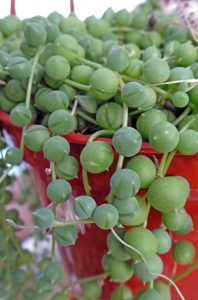
String of pearls is an unusual succulent with nearly spherical leaves from South Africa. Named after British botanist Gordon Rowley, the species was recently moved from huge genus Senecio (which contains not just succulents but also common weeds like common groundsel) into the new genus Curio, but is likely to be identified as Senecio rowleyanus in literature and the horticulture trade. This tender evergreen perennial in the daisy family (Asteraceae) is native to dry areas of the eastern Cape of South Africa. There is also a variegated form with wide white stripes and sections (which might actually be S. herreianus which has slightly larger, elongated and striped round leaves and is also called string of pearls or string of beads).
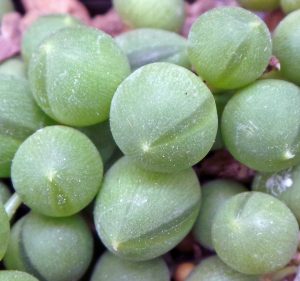
The plant grows from weak surface roots, producing trailing stems up to three feet long on the ground which can root where they touch soil to form dense mats. It often grows under bushes or between rocks which provide some protection from intense sunlight. The alternate, water-storing leaves are the size and shape of small peas (each to 1/4” diameter) with a small pointed tip on the end and a thin stripe of dark green along the side. The round shape of the leaves minimizes the surface area exposed to dry desert air and therefore reduces evaporative water loss but also reduces the surface area where photosynthesis can occur compared to a normal thin, flat leaf. The ban of darker, translucent tissue on the side of the leaf is an “epidermal window” which allows light to enter the interior of the leaf, effectively increasing the area available for photosynthesis. This adaptation to arid environments is seen in several other succulents from southern Africa, including the related Senicio radicans, and in baby toes (Fenestraria spp.) and Haworthia cooperi which grow underground, exposing only the leaf tips.

String of pearls blooms in summer, producing ½ inch compound, daisy-like flowers of white discoid flowers with long red stamens and bright yellow anthers on 1½ inch long peduncles. The small flowers are not showy but are fragrant; it is said to have a sweet and spicy, cinnamon-like scent. The flowers are followed by multiple seeds, each with a white cottony pappus which aids in dispersal by the wind.
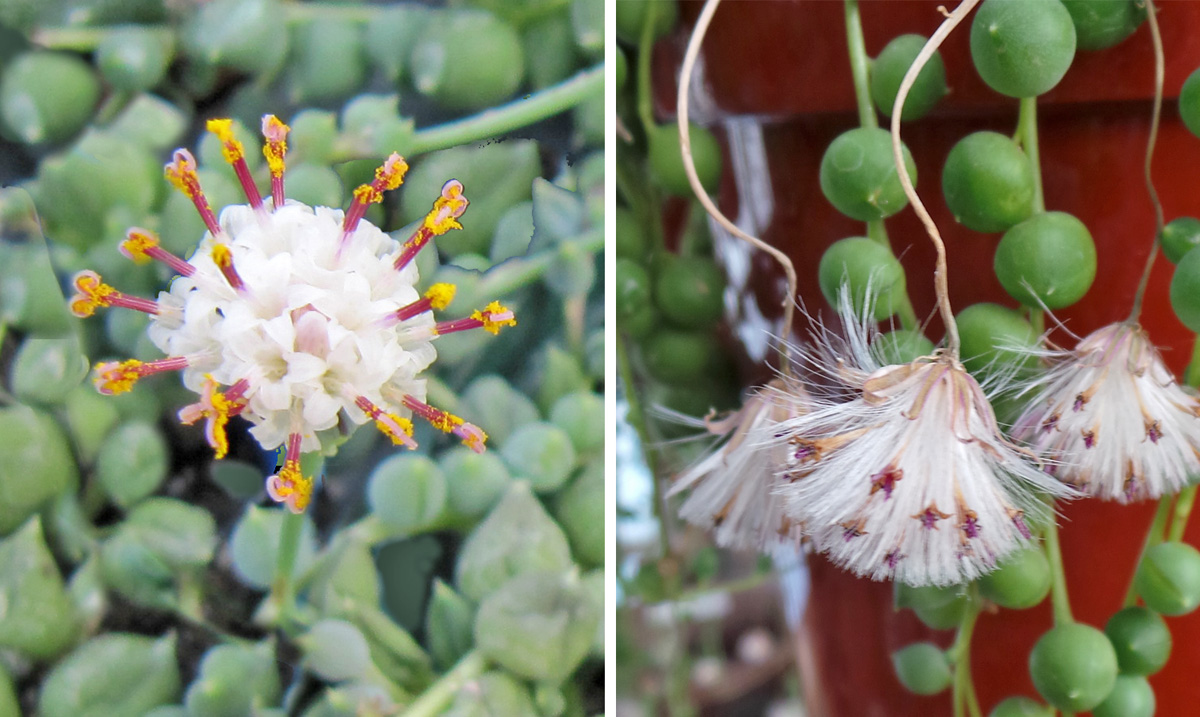
String of pearls is commonly grown as a houseplant or an outdoor ornamental in frost-free climates. It is often grown in hanging baskets to allow the trailing stems to spill downward. It could also be grown in a flat dish allowing it to maintain the trailing growth habit seen in the wild. Indoor containers can be moved outside for the growing season but need to be acclimated gradually to prevent sunburn, should be protected from excess rainfall, and must be moved back indoors before frost.
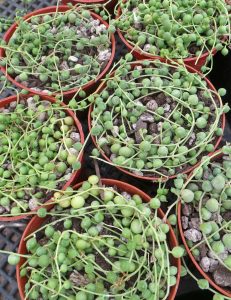
Like other succulents, this plant is relatively low maintenance and only needs bright light, well-drained soil, and infrequent watering. Root rot from overwatering is the most common cause of its demise. Grow in a very well-draining soil mix, such as cactus mix or add inorganic materials such as small pea gravel, sharp sand, poultry grit or pumice to potting medium (up to 1:1 mixture). Use a shallow container since the plants will not produce an extensive root system (and if they are unable to quickly remove moisture from a large soil volume, they will be more susceptible to root rot). Clay containers are better than plastic or ceramic because the material allows evaporation through the sides so the soil will dry out more quickly. Allow the potting medium to dry out completely between waterings, providing more water in summer than in winter when the plant is not actively growing. Providing a rest period during the winter with cool (55-60°F). Dry conditions may promote blooming in summer. Plants need to be watered when the leaves start to look a bit shriveled. Repot every year or two or fertilize lightly in spring. Mealybugs or aphids may infest plants but otherwise they have few pest problems. The leaves are slight toxic; ingestion may cause vomiting or diarrhea the plant’s sap may cause skin irritation or rash in sensitive individuals.
Propagate string of pearls by taking 3-4 inch stem tip cuttings. Strip 3-4 leaves from the bottom of the cutting and place in or on moist potting mix (lightly cover the last few bottom nodes) and roots should quickly develop at each node. Mist the soil surface to avoid overwatering until the roots are established. This plant can also be grown from seed but it is not commonly available.
– Susan Mahr, University of Wisconsin – Madison
Latest from Wisconsin Yard & Garden
Ask Your Gardening Question
If you’re unable to find the information you need, please submit your gardening question here:





 Houseplant Care
Houseplant Care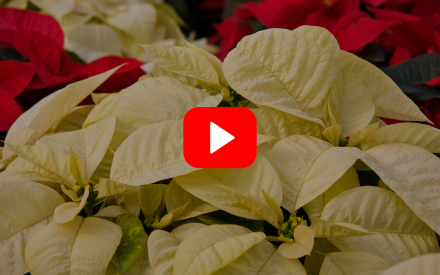 ▶ Watch: Maintaining Your Festive Houseplants
▶ Watch: Maintaining Your Festive Houseplants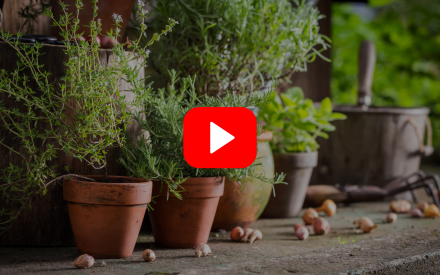 ▶ Watch: Bringing the Garden Inside
▶ Watch: Bringing the Garden Inside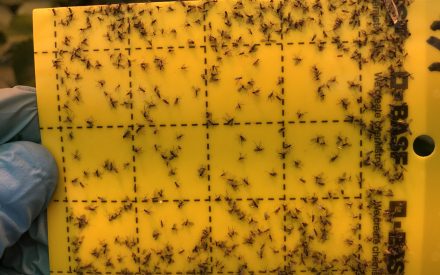 Fungus Gnats on Houseplants
Fungus Gnats on Houseplants


